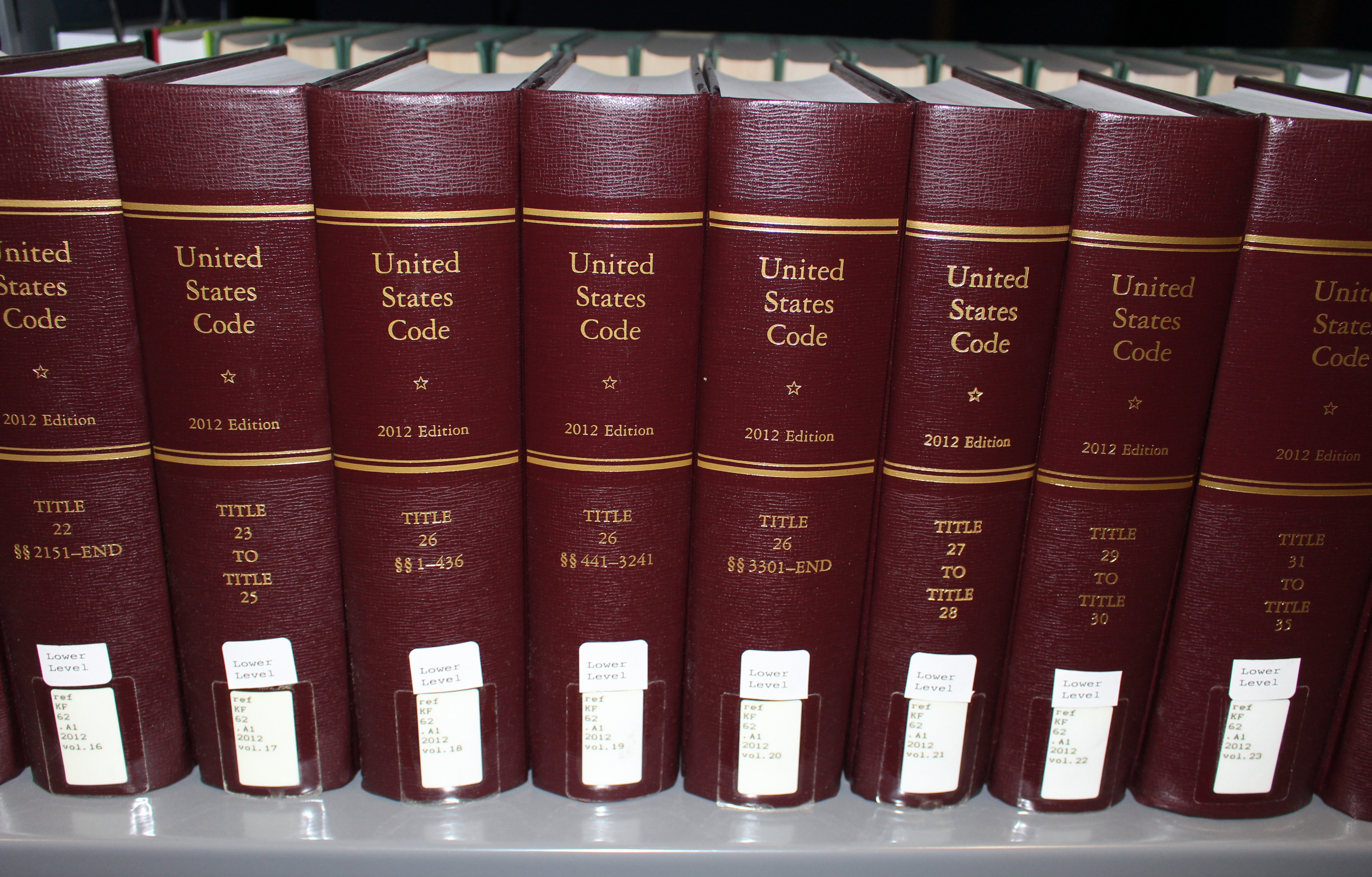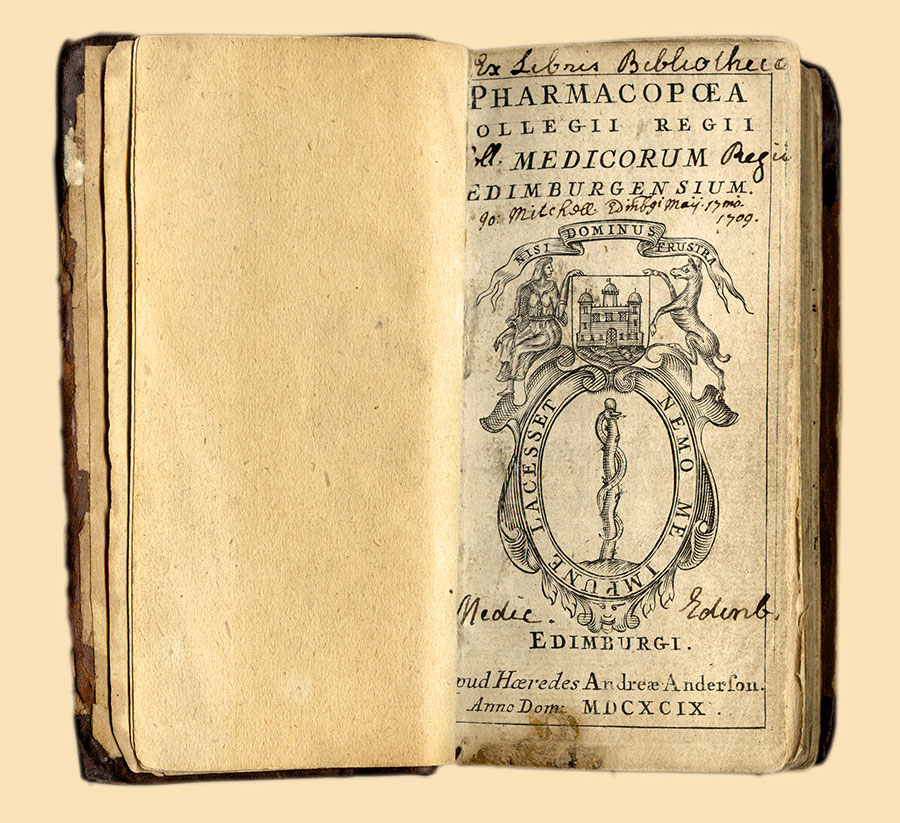|
U.S. Pharmacopeia
The ''United States Pharmacopeia'' (''USP'') is a pharmacopeia (compendium of drug information) for the United States published annually by the United States Pharmacopeial Convention (usually also called the USP), a nonprofit organization that owns the trademark and also owns the copyright on the pharmacopeia itself. The ''USP'' is published in a combined volume with the ''National Formulary'' (a formulary) as the USP-NF. If a drug ingredient or drug product has an applicable ''USP'' quality standard (in the form of a ''USP-NF'' monograph), it must conform in order to use the designation "USP" or "NF". Drugs subject to ''USP'' standards include both human drugs ( prescription, over-the-counter, or otherwise) and animal drugs. ''USP-NF'' standards also have a role in US federal law; a drug or drug ingredient with a name recognized in ''USP-NF'' is considered adulterated if it does not satisfy compendial standards for strength, quality or purity. USP also sets standards for dieta ... [...More Info...] [...Related Items...] OR: [Wikipedia] [Google] [Baidu] |
Nonprofit
A nonprofit organization (NPO) or non-profit organisation, also known as a non-business entity, not-for-profit organization, or nonprofit institution, is a legal entity organized and operated for a collective, public or social benefit, in contrast with an entity that operates as a business aiming to generate a profit for its owners. A nonprofit is subject to the non-distribution constraint: any revenues that exceed expenses must be committed to the organization's purpose, not taken by private parties. An array of organizations are nonprofit, including some political organizations, schools, business associations, churches, social clubs, and consumer cooperatives. Nonprofit entities may seek approval from governments to be tax-exempt, and some may also qualify to receive tax-deductible contributions, but an entity may incorporate as a nonprofit entity without securing tax-exempt status. Key aspects of nonprofits are accountability, trustworthiness, honesty, and openness to ever ... [...More Info...] [...Related Items...] OR: [Wikipedia] [Google] [Baidu] |
United States Code
In the law of the United States, the Code of Laws of the United States of America (variously abbreviated to Code of Laws of the United States, United States Code, U.S. Code, U.S.C., or USC) is the official compilation and codification of the general and permanent federal statutes. It contains 53 titles (Titles 1–54, excepting Title 53, which is reserved for a proposed title on small business). The main edition is published every six years by the Office of the Law Revision Counsel of the House of Representatives, and cumulative supplements are published annually.About United States Code Gpo.gov. Retrieved on 2013-07-19. The official version of these laws appears in the '' United States Stat ... [...More Info...] [...Related Items...] OR: [Wikipedia] [Google] [Baidu] |
Pharmacopoeia Of The People's Republic Of China
A pharmacopoeia, pharmacopeia, or pharmacopoea (from the obsolete typography ''pharmacopœia'', meaning "drug-making"), in its modern technical sense, is a book containing directions for the identification of compound medicines, and published by the authority of a government or a medical or pharmaceutical society. Descriptions of preparations are called monographs. In a broader sense it is a reference work for pharmaceutical drug specifications. Etymology The term derives from grc, φαρμακοποιία ''pharmakopoiia'' "making of (healing) medicine, drug-making", a compound of φάρμακον ''pharmakon'' "healing medicine, drug, poison", the verb ποιεῖν ''poiein'' "to make" and the abstract noun suffix -ία ''-ia''. In early modern editions of Latin texts, the Greek diphthong οι (''oi'') is latinized to its Latin equivalent ''oe'' which is in turn written with the ligature ''œ'', giving the spelling ''pharmacopœia''; in modern UK English, ''œ'' i ... [...More Info...] [...Related Items...] OR: [Wikipedia] [Google] [Baidu] |
Japanese Pharmacopoeia
The is the official pharmacopoeia of Japan. It is published by the . The first edition was published on 25 June 1886, with revisions being issued from time to time. The current revision is number 18, issued electronically on 7 June 2021. An official English translation is in preparation (status: 06 Aug 2021). See also * ''The International Pharmacopoeia ''The International Pharmacopoeia'' (''Pharmacopoeia Internationalis'', ''Ph. Int.'') is a pharmacopoeia issued by the World Health Organization as a recommendation, with the aim to provide international quality specifications for pharmaceutical s ...'' References Pharmacopoeias Pharmacy in Japan {{japan-lit-stub ja:薬局方#日本薬局方 ... [...More Info...] [...Related Items...] OR: [Wikipedia] [Google] [Baidu] |
European Pharmacopoeia
The ''European Pharmacopoeia'' (''Pharmacopoeia Europaea'', ''Ph. Eur.'') is a major regional pharmacopoeia which provides common quality standards throughout the pharmaceutical industry in Europe to control the quality of medicines, and the substances used to manufacture them. It is a published collection of monographs which describe both the individual and general quality standards for ingredients, dosage forms, and methods of analysis for medicines. These standards apply to medicines for both human and veterinary use. Legal basis The ''European Pharmacopoeia'' has a legally binding character. It is used as an official reference to serve public health, and is part of the regulatory requirements for obtaining a Marketing Authorisation (MA) for a medicinal (human or veterinary) product. The quality standards of the European Pharmacopoeia apply throughout the entire life-cycle of a product, and become legally binding and mandatory on the same date in all thirty-nine (39) ... [...More Info...] [...Related Items...] OR: [Wikipedia] [Google] [Baidu] |
British Pharmacopoeia
The ''British Pharmacopoeia'' (''BP'') is the national pharmacopoeia of the United Kingdom. It is an annually published collection of quality standards for medicinal substances in the UK, which is used by individuals and organisations involved in pharmaceutical research, development, manufacture and testing. Pharmacopoeial standards are publicly available and legally enforceable standards of quality for medicinal products and their constituents. The ''British Pharmacopoeia'' is an important statutory component in the control of medicines, which complements and assists the licensing and inspection processes of the UK's Medicines and Healthcare products Regulatory Agency (MHRA). Together with the ''British National Formulary'' (BNF), the ''British Pharmacopoeia'' defines the UK's pharmaceutical standards. Pharmacopoeial standards are compliance requirements; that is, they provide the means for an independent judgement as to the overall quality of an article, and apply throu ... [...More Info...] [...Related Items...] OR: [Wikipedia] [Google] [Baidu] |
Chemical Purity
In chemistry, chemical purity is the measurement of the amount of impurities found in a sample. Several grades of purity are used by the scientific, pharmaceutical, and industrial communities. Some of the commonly used grades of purity include: * ACS grade is the highest level of purity, and meets the standards set by the American Chemical Society (ACS). The official descriptions of the ACS levels of purity is documented in the '' Reagent Chemicals'' publication, issued by the ACS. It is suitable for food and laboratory uses. * Reagent grade is almost as stringent as the ACS grade. * USP grade meets the purity levels set by the United States Pharmacopeia (USP). USP grade is equivalent to the ACS grade for many drugs. * NF grade is a purity grade set by the National Formulary (NF). NF grade is equivalent to the ACS grade for many drugs. * British Pharmacopoeia: Meets or exceeds requirements set by the British Pharmacopoeia (BP). Can be used for food, drug, and medical purpose ... [...More Info...] [...Related Items...] OR: [Wikipedia] [Google] [Baidu] |
ASEAN
ASEAN ( , ), officially the Association of Southeast Asian Nations, is a political and economic union of 10 member states in Southeast Asia, which promotes intergovernmental cooperation and facilitates economic, political, security, military, educational, and sociocultural integration between its members and countries in the Asia-Pacific. The union has a total area of and an estimated total population of about 668million. ASEAN's primary objective was to accelerate economic growth and through that social progress and cultural development. A secondary objective was to promote regional peace and stability based on the rule of law and the principles of the UN Charter. With some of the fastest growing economies in the world, ASEAN has broadened its objective beyond the economic and social spheres. In 2003, ASEAN moved along the path similar to the European Union (EU) by agreeing to establish an ASEAN community that consists of three pillars: the ASEAN Security Community, the ... [...More Info...] [...Related Items...] OR: [Wikipedia] [Google] [Baidu] |
United States Agency For International Development
The United States Agency for International Development (USAID) is an independent agency of the U.S. federal government that is primarily responsible for administering civilian foreign aid and development assistance. With a budget of over $27 billion, USAID is one of the largest official aid agencies in the world and accounts for more than half of all U.S. foreign assistance—the highest in the world in absolute dollar terms. Congress passed the Foreign Assistance Act on September 4, 1961, which reorganized U.S. foreign assistance programs and mandated the creation of an agency to administer economic aid. USAID was subsequently established by the executive order of President John F. Kennedy, who sought to unite several existing foreign assistance organizations and programs under one agency. USAID became the first U.S. foreign assistance organization whose primary focus was long-term socioeconomic development. USAID's programs are authorized by Congress in the Foreign Assist ... [...More Info...] [...Related Items...] OR: [Wikipedia] [Google] [Baidu] |
Formulary (pharmacy)
A formulary is a list of pharmaceutical drugs, often decided upon by a group of people, for various reasons such as insurance coverage or use at a medical facility. Traditionally, a formulary contained a collection of formulas for the compounding and testing of medication (a resource closer to what would be referred to as a pharmacopoeia today). Today, the main function of a prescription formulary is to specify particular medications that are approved to be prescribed at a particular hospital, in a particular health system, or under a particular health insurance policy. The development of prescription formularies is based on evaluations of efficacy, safety, and cost-effectiveness of drugs. Depending on the individual formulary, it may also contain additional clinical information, such as side effects, contraindications, and doses. By the turn of the millennium, 156 countries had national or provincial essential medicines lists and 135 countries had national treatment. Australi ... [...More Info...] [...Related Items...] OR: [Wikipedia] [Google] [Baidu] |
Institute Of Medicine
The National Academy of Medicine (NAM), formerly called the Institute of Medicine (IoM) until 2015, is an American nonprofit, non-governmental organization. The National Academy of Medicine is a part of the National Academies of Sciences, Engineering, and Medicine, along with the National Academy of Sciences (NAS), National Academy of Engineering (NAE), and the National Research Council (NRC). The National Academy of Medicine provides national and international advice on issues relating to health, medicine, health policy, and biomedical science. It aims to provide unbiased, evidence-based, and authoritative information and advice concerning health and science policy to policy-makers, professionals, leaders in every sector of society, and the public at large. Operating outside the framework of the U.S. federal government, it relies on a volunteer workforce of scientists and other experts, operating under a formal peer-review system. As a national academy, the organization a ... [...More Info...] [...Related Items...] OR: [Wikipedia] [Google] [Baidu] |



